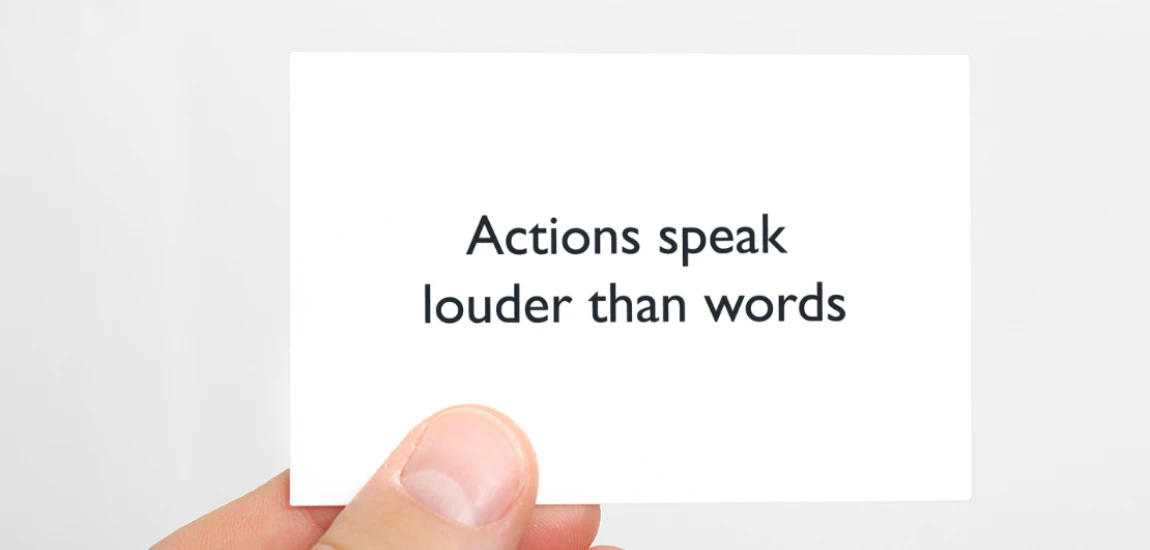Silence as Strategy: When Not Posting Says More Than a Statement

We live in an era where every thought, reaction, and event seems destined for a feed. Politicians tweet before press conferences, influencers post “Notes app apologies” at lightning speed, and brands scramble to respond to trending hashtags within hours. Social media has created a pressure cooker of constant communication, where silence is often viewed as avoidance or complicity. Yet, paradoxically, silence is emerging as one of the most powerful tools in digital strategy.
The idea of silence as strategy flips the script on our “always-on” culture. Instead of reacting instantly, silence creates space—space to observe, think, and respond deliberately rather than impulsively. It can disarm critics, reduce controversy, and even generate intrigue. When everyone is shouting online, the absence of noise can be louder than the loudest statement.
Brands, celebrities, and everyday users are realizing that sometimes, saying nothing is smarter than saying something. Silence can prevent missteps in sensitive conversations, create mystery around personal brands, or demonstrate humility in moments when words feel inadequate.
This blog explores why silence is increasingly being used as a digital strategy, how it works in practice, and what lessons individuals and organizations can learn from it. From reputation management to audience psychology, we’ll unpack why staying quiet might be the most powerful move in a world that rewards oversharing.
The Power of Silence in the Noise Economy
Social media thrives on speed and volume. The more posts, likes, comments, and shares, the more visibility and engagement platforms generate. But in this noise economy, where millions of voices compete for attention, silence becomes disruptive. Not posting can feel radical in a culture built on constant updates.
Psychologically, silence creates a gap that audiences rush to fill. When a brand or celebrity doesn’t immediately comment on a trending controversy, people speculate: Are they reflecting? Are they complicit? Are they above the drama? This speculation, while risky, generates more intrigue than a hastily written statement. In fact, silence forces people to slow down and consider the absence of a response, which often keeps the focus on the individual or brand longer than a standard post would.
Consider how certain celebrities handle public scandals. Some issue apologies right away—often poorly worded and poorly received. Others go silent, let the noise swell and dissipate, then re-emerge with carefully chosen words or actions. The latter often retain credibility because they avoid fanning the flames of outrage in the heat of the moment.
Brands also use silence strategically. During polarizing debates, some companies deliberately refrain from weighing in, choosing neutrality over divisiveness. While risky, this approach can protect them from alienating key segments of their customer base. It’s not about indifference—it’s about calculated restraint.
In an age where visibility feels like survival, silence provides scarcity. Scarcity creates value. And in a landscape flooded with noise, silence often commands more attention than endless words.

Silence vs. Statements: When to Hold Back
The biggest challenge in using silence as strategy is knowing when it’s wise to stay quiet and when it’s necessary to speak. Silence can be powerful, but it can also backfire if interpreted as ignorance, avoidance, or lack of accountability. Striking the right balance requires understanding context, audience expectations, and timing.
For example, silence can be effective when a situation is evolving rapidly. Posting too soon in response to breaking news often leads to misinformation or missteps. Waiting until facts are clear allows for a more informed, credible response. Silence here signals thoughtfulness and care.
On the other hand, silence can damage credibility if a brand or public figure is expected to take a stand. During moments of cultural reckoning—such as social justice movements—audiences often demand visible solidarity. Remaining quiet may be read as complicity or disinterest. In these cases, silence risks alienating loyal communities.
Another factor is the scale of scrutiny. A small creator can afford to be silent during controversies in ways a global corporation cannot. The larger the platform, the more silence is interpreted as intentional. Silence, therefore, becomes its own form of communication—sending a message whether or not one is intended.
Ultimately, silence works best when it’s strategic rather than reactive. The key is intention: silence should create space for reflection, not avoidance. It should demonstrate control, not fear. A good litmus test is to ask: Will silence buy me clarity and credibility, or will it create suspicion and mistrust? The answer guides whether silence strengthens or weakens the strategy.

The Psychology Behind Silence: Why It Resonates
Silence feels powerful because it disrupts expectations. Online, the default expectation is immediate response. We anticipate instant tweets, quick Instagram Stories, or live-stream reactions. When someone breaks that pattern by withholding, it sparks curiosity. This curiosity drives engagement in indirect ways—people talk about the silence, speculate about motives, and analyze timing.
From a psychological perspective, silence taps into the Zeigarnik effect—the human tendency to fixate on unfinished or unresolved situations. When there’s no closure, our brains keep returning to the question. Silence leaves conversations “unfinished,” which keeps people thinking and talking about the absent voice longer than they might if a clear statement had been made.
Silence also leverages the principle of restraint as authority. Leaders who speak sparingly often command more respect, because their words feel measured and intentional. Similarly, when a brand or influencer chooses silence, they appear more in control—less desperate to appease or defend themselves.
Interestingly, silence can also provide comfort. In moments of collective grief or trauma, audiences sometimes don’t want polished statements. They want acknowledgment through presence, not performance. Remaining silent—perhaps posting nothing but a single symbolic image—can feel more authentic than lengthy corporate messaging.
In short, silence resonates because it feels rare, intentional, and weighty. It challenges the expectation of constant commentary and, in doing so, reclaims power in a noisy environment.

Silence as Brand Strategy: Lessons for Businesses
For businesses, silence as strategy can be both a shield and a spotlight. Brands often feel pressured to post daily, respond instantly, and engage constantly. Yet overposting risks fatigue, insincerity, or even brand dilution. Silence can help restore balance by making each communication more meaningful.
Take crisis management as an example. When a brand faces backlash, the instinct is to issue a statement within hours. But silence—used wisely—buys time to gather facts, consult experts, and craft a thoughtful response. By avoiding knee-jerk posts, brands reduce the risk of making errors that compound the crisis.
Silence also works as a scarcity tactic. When a brand intentionally reduces its online chatter, each post feels more significant. Think of luxury brands like Apple or Chanel—they post sparingly, yet every campaign generates massive buzz. Their silence cultivates an aura of exclusivity.
That said, silence must be paired with listening. Not posting doesn’t mean disengaging. Brands that use silence effectively often monitor conversations closely, gauge public sentiment, and re-enter discussions strategically. Silence, in this sense, is less about absence and more about timing.
For smaller businesses, silence can prevent burnout. Instead of chasing every trend, choosing to stay silent until you have something truly valuable to share can preserve authenticity and build stronger trust. It signals that your brand values quality over noise.
The key lesson? Silence should never equal neglect. When used intentionally, it’s a strategic pause that enhances credibility, preserves reputation, and amplifies the impact of future communication.




